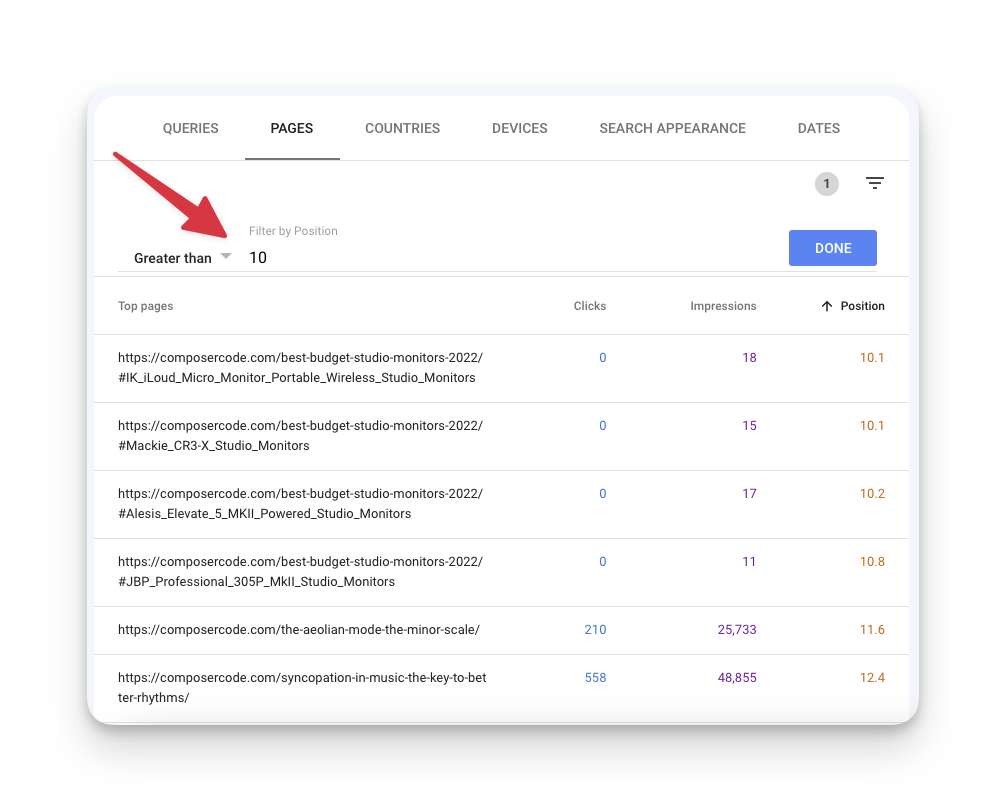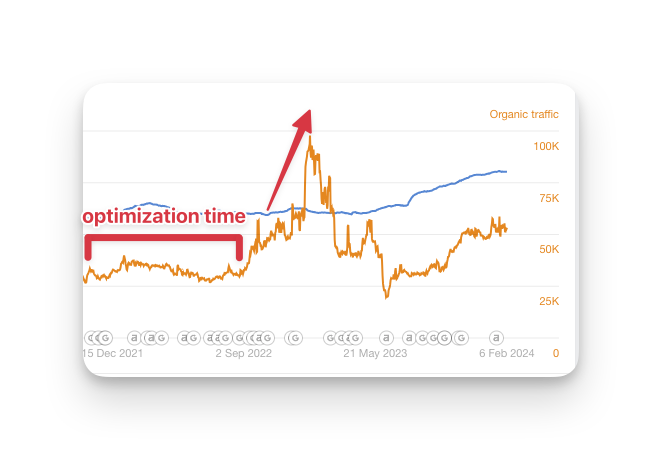In SEO, we like to say that the best place to hide a dead body is on the second page of Google.
Think about it: how often have you actually clicked through to the second (or third, or fourth) page of Google after a search? Heck, most people don’t even go past the fourth or fifth result in the search engine results page (SERP).
According to this study from Backlinko, the #1 organic result is 10x more likely to receive a click. That’s wild.
In 2021, I connected with CauseVox, a fantastic nonprofit donor management SaaS company. They’d been massively hit by Google’s algorithm updates and were seeing significant traffic dips.
After performing an audit on their site, I immediately found the issue.
“After we experienced a dip in our organic rankings, Matt came in and did a full audit of our site. He identified the highest-impact actions and helped us immediately change course. While he worked with us, we ranked in the number one spot for several target keywords, captured multiple featured snippets, and saw our organic traffic grow by 225%. Matt is communicative, easy to work with, and delivers real results. I’d recommend him to anyone wanting more leads, traffic, or sales for their business.”
Rob Wu
The problem
A lot of times, Google’s algorithms aren’t necessarily “punishing” us, but rather putting us in our place. I know this sounds harsh, so bear with me.
For many years, SEOs and content creators have been able to get away with “pretty good” content. Maybe it’s a bit thin, has a few typos, or isn’t up-to-date. But as Google continues to refine their algo, “just okay” isn’t good enough. In fact, this is exactly what had happened with CauseVox.
The company blog had a massive library of posts, but they all exhibited some concerning symptoms:
- The content was thin (it didn’t comprehensively cover a given subject, stayed “surface level”, or was awkwardly written)
- The Three Kings (URL, title tag, and H1) were not optimized for a target keyword
- There was little to no interlinking (linking your internal content to other internal pages/posts is an SEO cheat code. It passes “link juice” and can help you see huge gains in relatively little time).
CauseVox had a really solid backlink profile, so authority in their niche wasn’t an issue. Their on-page situation, however, needed some serious TLC. Here’s what I did:
The Solution
1. Gather all pages
Because CauseVox had such a massive library of posts, I knew I had to get organized or things would spin out of control fast. I exported all the posts & pages from Google Analytics and sorted them according to their existing traffic.
2. Prioritize the low-hanging fruit
Low-hanging fruit keywords/pages are those that are just within striking distance of the top 10 results in Google. Think of SEO like American football. Once you get on the first page of Google, boom, that’s a first down. Then, you can focus on getting in the top 3 results, and potentially in the featured snippet spot (more on that soon).
So, I ran a filter in Google Search Console that showed me all pages that are greater than position 10. I won’t show you CauseVox’s SEO info, but here’s what that looks like on my niche site, Composer Code:

Bingo. These URLs should be your first target. Why? Because if they just need a little push to get on that first page and start demonstrating some traffic gains.
3. Optimize each page, one-by-one
This next step isn’t easy, and it’s certainly time-consuming, but it works. I spent the next several months:
- Finding the best target keyword for each page based on search volume, competition, and business value
- Making sure the H1, title tag, URL, and opening paragraph all contain the keyword in a prominent, but natural way
- Running the page’s content through SurferSEO, an on-page optimization tool, and editing the content to reach the highest possible score in terms of word count, keyword density, and grammar/spelling
It was a grueling task, but our hard work paid off and we started seeing immediate gains.
The results
Here’s an Ahrefs pull of the site’s current data. I don’t like to sugarcoat the numbers, and yes, that big dip was unfortunately after we’d finished working together and the site had seemingly experienced some technical SEO issues.
However, they’re back on track and trending in the right direction:

We even scored some featured snippets for high-value business terms like “nonprofit partnership”:

We also scored the number 1 spot for terms like “50/50 raffle”

All-in-all, working with Rob and his team over at CauseVox was a perfect case study of the value of SEO, and keeping it simple:
- Targeted on-page signals
- Thorough content
- Comprehensive coverage
With a little bit of love, good content can turn into great, profitable content. To learn more about how I can help, fill out the form below, and let’s chat!